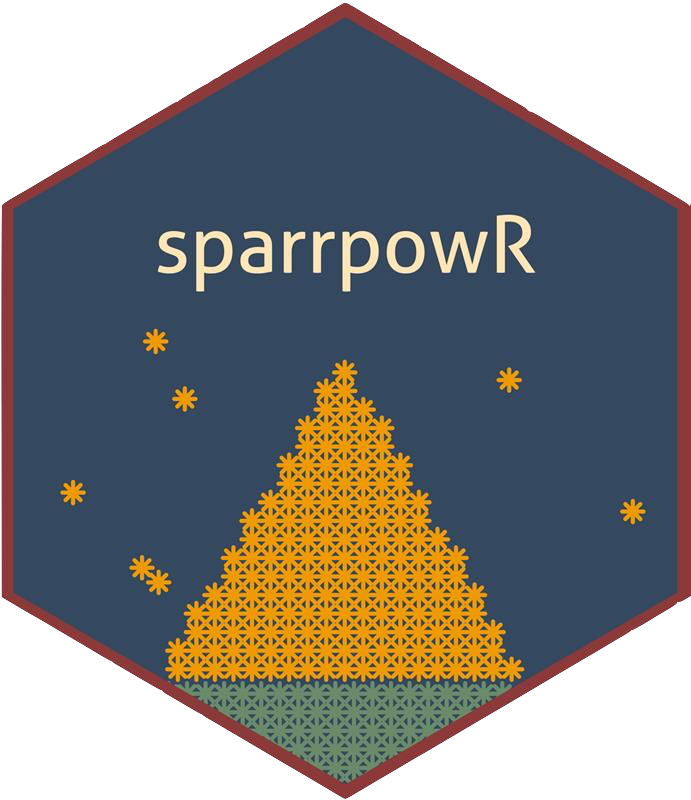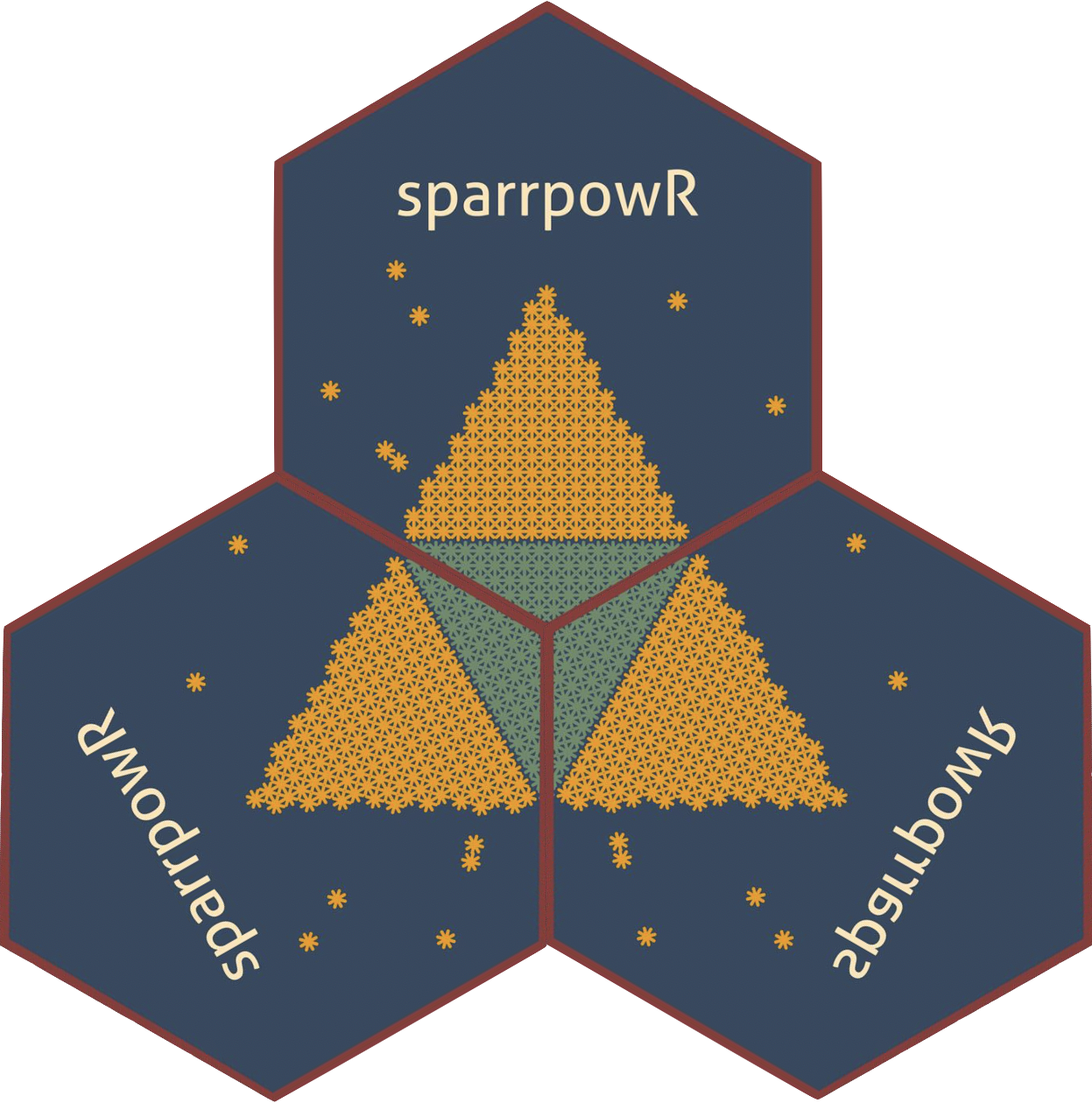Creating a hexsticker for the {sparrpowR} package
 Image credit: Ian Buller
Image credit: Ian Buller
I present code to create the hexsticker for the sparrpowR package using the hexSticker and spatstat packages. The sparrpowR calculated the statistical power for a spatial relative risk function from the sparr package.
- Update 06/15/2020: The {sparrpowR} sticker is posted in the hexSticker README.md file *
# Packages
loadedPackages <- c("hexSticker", "spatstat")
invisible(lapply(loadedPackages, require, character.only = TRUE))
set.seed(1234) # for reproducibility
par(pty = "s") # for equal proportionsThe point pattern to plot within the hexsticker is created using the spatstat package.
# Create windows for separate point patterns
angle <- pi / 3
x <- c(0, 0.5, 0.5 * cos(angle), 0) + 1
y <- c(0, 0, 0.5 * sin(angle), 0) + 1
y1 <- c(0, 0, 0.5 * -sin(angle), 0) + 1
x2 <- c(1 - 0.33, 1.1, 1.25, 1.6, 1.5 + 0.33, 1 - 0.33)
y2 <- c(1.5, 1, 1.433013, 1, 1.5, 1.5)
# Create point patterns
g1 <- spatstat::rsyst(nx = 20, win = spatstat::owin(poly = list(x = x, y = y)))
g2 <- spatstat::rsyst(nx = 20, win = spatstat::owin(poly = list(x = rev(x), y = rev(y1))))
g3 <- spatstat::rpoispp(lambda = 20, win = spatstat::owin(poly = list(x = x2, y = y2)))
# Set marks for point patterns (for colors)
spatstat::marks(g1) <- 1
spatstat::marks(g2) <- 2
spatstat::marks(g3) <- 1
# Combine point patterns and set marks to be factors
g4 <- spatstat::superimpose(g1, g2, g3)
spatstat::marks(g4) <- as.factor(spatstat::marks(g4))I use the hexSticker package to create the hexsticker which layers the sticker elements into a hexagon window. In order to hide points within the g4 object that reside outside the hexagon window I set the white_around_sticker argument as TRUE. I choose the Balance Within color palette.
# Create hexSticker
hexSticker::sticker(~spatstat::plot.ppp(g4,
cols = c("#ee9a00", "#698b69"),
show.all = F, cex = 0.5,
pch = c(8, 8)),
package = "sparrpowR",
p_size = 5,
p_color = "#ffe4b5",
s_x = 0.7, s_y = 0.1,
s_width = 3.33, s_height = 3.33,
h_fill = "#344960",
h_color = "#8b3a3a",
dpi = 1000,
white_around_sticker = TRUE)After removing the white image background in your favorite image editor you can replicate the final hexsticker.

And when you connect three stickers you can create a larger design:
